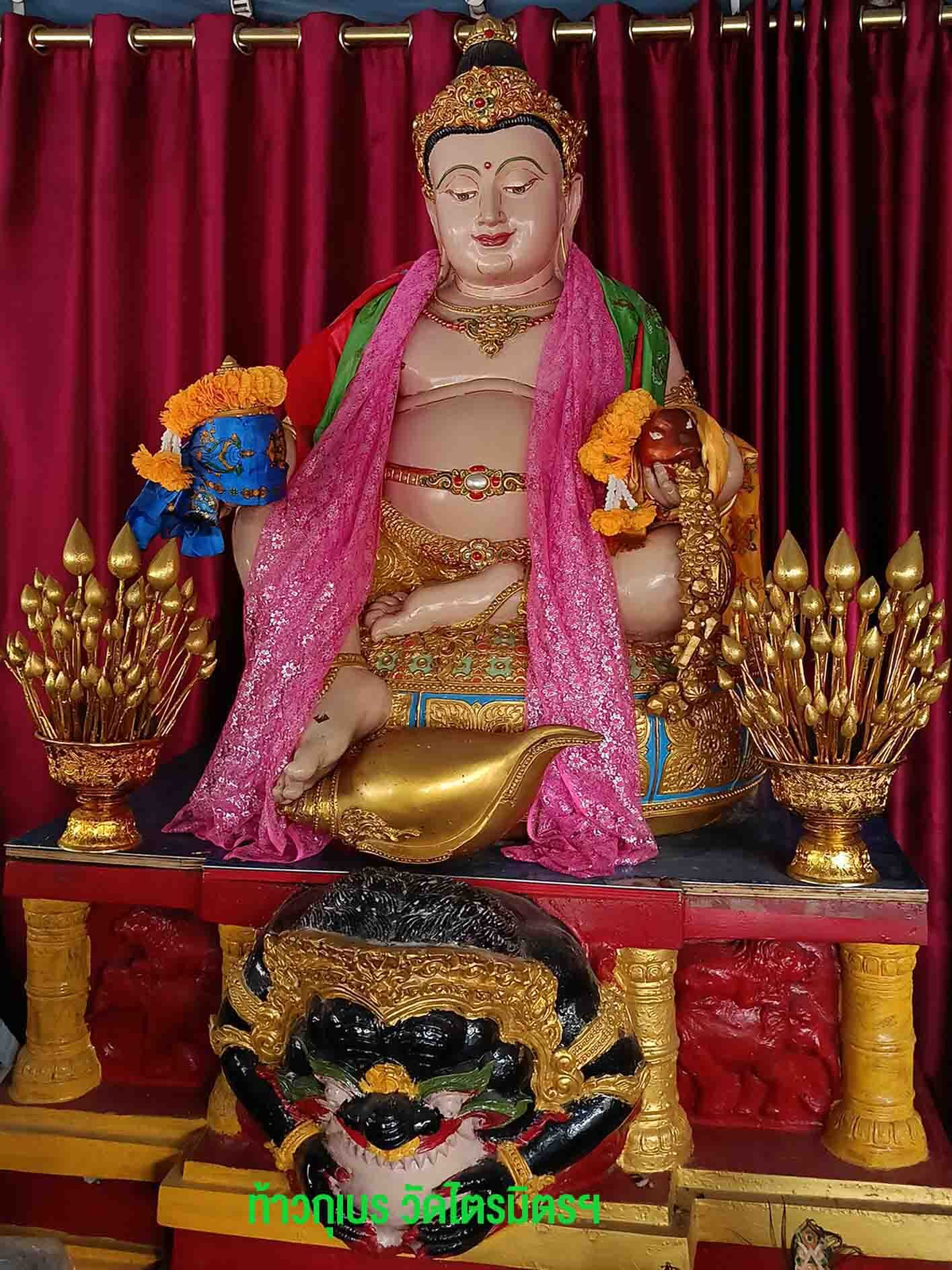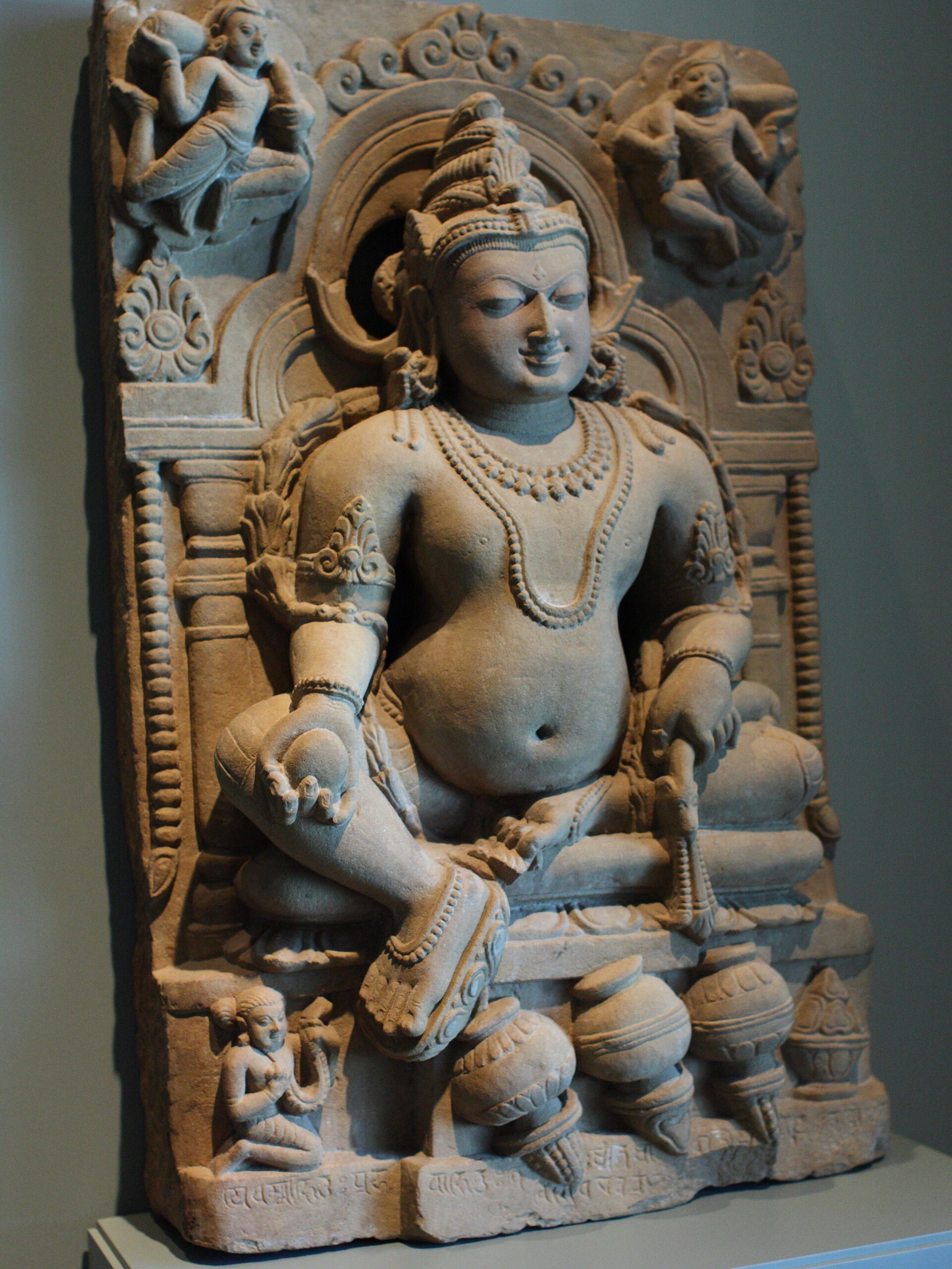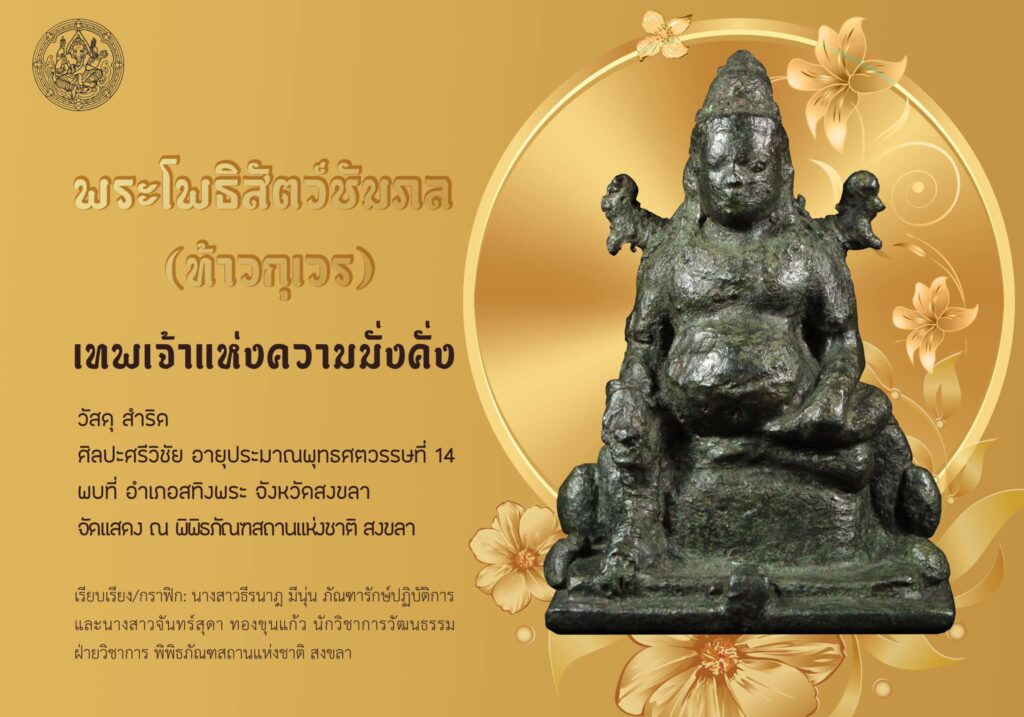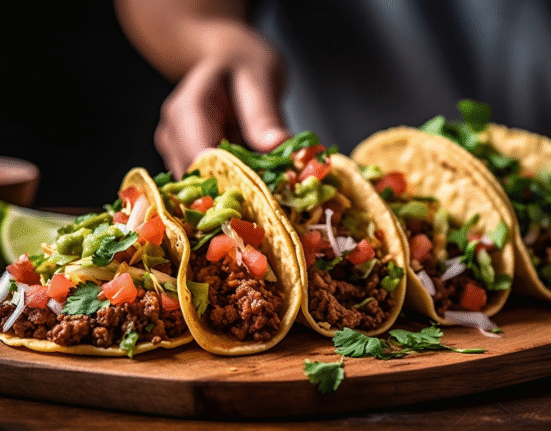Unveiling the true role of Tao Vessavana in Buddhism—shielding devotees from black magic and evil spirits, rather than bestowing wealth.
Many people still have misconceptions about Tao Vessavana, especially regarding his powers. Is he really the one who grants wealth, or is there something more to his role? Let Ticy City take you on a journey through the teachings of Nai Mu, a spiritual expert, to clear up any doubts. And by understanding the right “form” of Tao Vessavana, you’ll know exactly how to pray and make offerings to fulfill your wishes. Just the title, Tao Vessavana: Protector Against Black Magic, Not a Giver of Wealth, probably raises a few questions already.


First things first, don’t be confused. Tao Vessavana, the deity you often see in temples, isn’t responsible for bestowing wealth. Instead, he’s a fierce protector of Buddhism, guarding against evil spirits, demons, and black magic. While his roots trace back to the Hindu god of wealth, Kuvera, Tao Vessavana’s role in Buddhism is entirely different.
“Itipiso Bhagawa Yammarajano Tao Vessuvannano Maranang Sukhang Ahang Sugato Namo Buddhaya Tao Vessuvannano Catumahārājika Yakkhappantābhatphurito Vessa Pusa Buddhang Arahang Phuttho Tao Vessuvannano Namo Buddhaya.”



If you’ve ever prayed to Tao Vessavana, chances are you’ve recited this mantra. In Buddhism, Tao Vessavana is one of the Four Great Kings (Catumahārājika), the celestial rulers who guard the four corners of the universe.

Tao Vessavana (The Hearer of All) rules the north, governing the Yakṣas (demons).
Tao Virulhaka (The Protector of Hidden Wealth) rules the south, overseeing the Kumbhandas.
Tao Virupaksa (The All-Seeing One) rules the west, governing the Nāgas (serpent beings).
Tao Dhatarattha (The Protector of the Land) rules the east, watching over the Gandharvas (heavenly musicians).
Tao Vessavana’s appearance is striking—he’s depicted as a short, stocky giant with green skin, standing with slightly bowed legs, holding a club, and often referred to as the “three-legged giant.” His image has long been believed to ward off evil spirits, with parents even tying Tao Vessavana’s talisman above their children’s beds to protect them from harm.
There’s an ancient story where the gods of the Catumahārājika heaven came to visit the Buddha, offering their protection to him and his followers. They also gave him the “Atanatiya Sutta,” a powerful chant to ward off evil spirits and black magic. Known as the “Phānyāk” in Buddhist rituals, this chant is so intense that some participants react violently, with monks having to sprinkle holy water to drive away the negative energy.

Another legend from the time of Kassapa Buddha tells of a Brahmin named Kuvera, who owned vast sugarcane fields and became immensely wealthy. After his death, Kuvera was reborn as Tao Kuvera, the ruler of the Yakṣas in the northern heavens, wielding a club known as Mahākāla, capable of destroying entire worlds.
One of Tao Kuvera’s other names is “Phra Phisornphon,” a divine figure of justice in the heavens. In Thailand, his image is used as the emblem for the Attorney General, symbolizing justice, much like his role as a guardian of fairness in the celestial realm.
In Thai culture, Tao Vessavana is often linked with Chinese Mahayana Buddhism, where he is known as “Tabung Tiang Ong,” depicted holding either a parasol or a pagoda. He’s considered the most intimidating of the Four Great Kings.
In Vajrayana Buddhism from Tibet, Tao Kuvera is referred to as “Jambhala,” the Bodhisattva of wealth.
“Om Jambhala Jalendraye Svaha.”

Now, let’s look at the origins of Tao Kuvera from Brahmin tradition. Known in the Vedic era as Yakadatta, Kuvera was originally a bandit. After seeking refuge in a long-abandoned temple of Shiva, he unknowingly pleased the god by lighting a lamp in the dark shrine. Shiva saved him from death and had him reborn as Vaiśravaṇa, who eventually became the god of wealth and the ruler of Lanka. After Ravana seized Lanka, Kuvera was given a new city called Alaka on Mount Gandhamādana.
Kuvera is depicted as a short, stout giant with golden skin, three legs, and eight teeth. He often holds a lemon and a mongoose that spits out jewels. In Hindu lore, Kuvera eventually became the assistant to the goddess Laksmi. Since Laksmi was always fanning Vishnu, Kuvera took on the responsibility of deciding who should receive wealth. This role explains why he is frequently shown beside Laksmi and sometimes with Ganesha as well.

In one humorous tale, Kuvera threw a lavish feast to show off his wealth, inviting Ganesha. But Ganesha ate and ate, consuming all the food and even the wealth of Alaka itself. Kuvera, now penniless, had to seek help from Parvati, who gave him a single bowl of rice to offer Ganesha. After eating it, Ganesha finally felt satisfied and returned all the riches to Kuvera.
These stories highlight the various aspects of Tao Kuvera in both Buddhism and Hinduism. While he is a god of wealth, he is not to be confused with Cai Shen Ye, the Taoist god of prosperity.
So, when you pray, be sure to address the right “form” of Tao Vessavana for your wishes to come true!
















Leave feedback about this